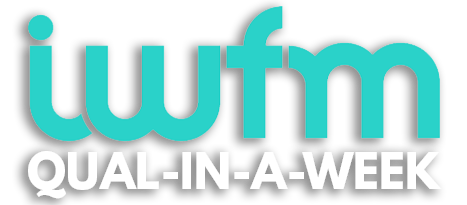Hi
Quick announcement before we get into this week’s topic – we’ve confirmed the dates for our next Qual-in-a-Week intensive course and enrolments are open.
If you’d like to achieve an IWFM Qualification, but don’t feel like you can commit the time to distance learning, then this is the course for you.
The Qual-in-a-Week course does just what it says on the tin – it allows you to complete all of the learning and assessment for an IWFM Level 4 Qualification in just one week. If this sounds of interest, you can find out more here.
OK, on to this week’s topic. Last week we considered how legal and statutory compliance should factor into your stakeholder analysis. If you missed it or need a recap, head over to this page.
Or if you’d like to catch up on any previous issues, you can access the Vault here.
This week, we’re looking at the contract and Service Level Agreement for your FM services and what bearing this has on your stakeholders.
Specific Performance Against the Contract
One of the key criteria used for deciding on the selection of a supplier when procuring goods or services is whether they have, in the past, complied with a contract. If you are providing a service and you do not comply with the contract it will inevitably affect the relationship you have with the client who has procured your services.
The best way of ensuring performance against a contract is to use accurate monitoring tools such as Key Performance Indicators and we will consider these in more detail later in a future issue. For now, it is important to remember that non-performance will have a major effect on stakeholder relations, particularly those with the client who is paying for the goods and/or services.
Linked into the contract is the service specification. The specification sets out exactly what is required and how it should be delivered. There are two main types of specification – the Input specification and the Output specification (we’ll also be covering these in a future issue – so much to look forward to!).
Changes in the type of specification or in the details will likely have an impact on various stakeholder groups. You need to manage these groups in order to ensure that any changes are implemented smoothly and effectively.
Communication is the key. Telling all stakeholders about the changes and what this will mean and importantly, giving them the opportunity to comment will help maintain relationships.
It may be that you have to negotiate with both the stakeholders and the contractor to come up with a solution that is suitable for everyone.
Remember, the contractor is also a stakeholder! Communication enables you to identify the stakeholder interests.
That’s all, folks
That’s all for now, but we’ll be back next week with the final part of this series, where we’ll consider risk management and business continuity and how they should factor into your stakeholder analysis.
Don’t forget to check out the Qual-in-a-Week intensive course if it sounds of interest. You can find out more here.
But for now, have a great week!
Chris and the Xenon Team
P.S. If you haven’t already studied or started studying for an IWFM qualification, which will cover topics like this in depth and fully assess your understanding, you may want to have a look at our guide to the IWFM Qualifications which will give you a full breakdown of how they work and what’s involved in the different levels. You can download it here.
P.P.S. If you’re already considering taking a qualification but don’t know which level to go for, a good starting point is our One-Minute-Leveller tool, which will ask you a few questions and give you a recommendation based on the result. You can access it here.



